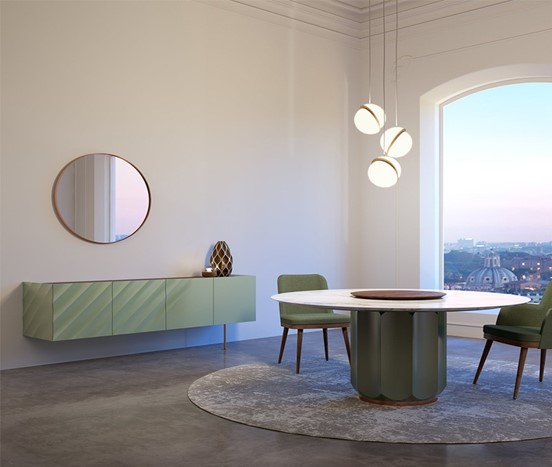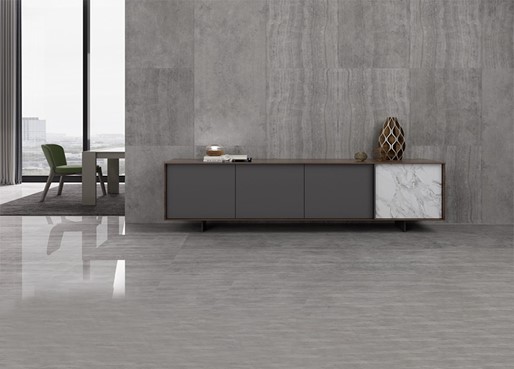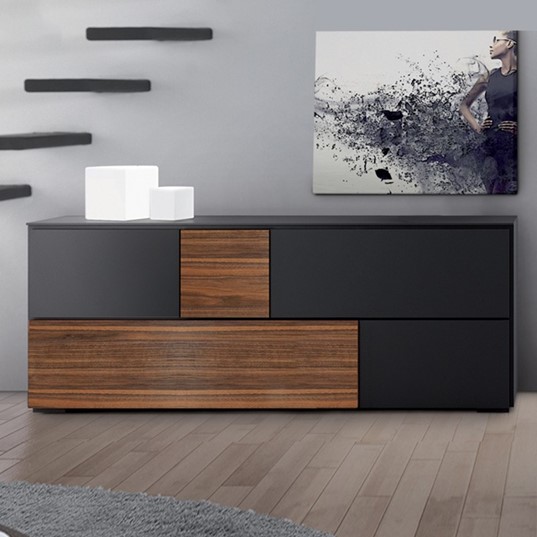What is a sideboard?
The sideboard was initially used in the dining room as a serving and waiting for buffet area. As designs evolve, they become universal and enrich any room in the house. Sideboards are a great place to display artwork, indoor plants, pottery, books, and other collectibles in the living room. In the bedroom, the sideboard becomes multifunctional. It also doubles as a dressing table, which can further be decorated with decorative mirrors or other collectibles such as jewelry, photographs, or perfumes.
Styling a sideboard
Styling and decorating a sideboard are no easy job but a sideboard is one of the indispensable pieces of furniture. Sideboards are ideal for presentation and storage. Historically a formal section, buffets are now available in all shapes and styles. The more modern minimalist designs remain clean, unfussy, and relaxed, while many traditional examples feature decorative hardware and intricately carved panels. They store utensils or cutlery as traditionally used, but the perfect storage furniture without affecting the room’s design. Besides being multipurpose, a buffet is also adept at filling those odd spaces few other pieces of furniture can handle. Follow the tips below to create a stylish and effortless look.
Where can you place the Sideboard?
Hallway: Hallways are often neglected when the design is taken into account, but if the space is wide enough, it is recommended to invest in a narrow sideboard that will make your hallway look as discreet as the rest of your home. It can also be excellent storage for keeping clean sheets and towels.
Bedroom: A sideboard in the bedroom is usually the most viable storage solution. A sideboard placed in low-slung spaces such as under a window allows you plenty of places to store. Many include a combo of drawers and adjustable shelves, and all provide a pretty surface for displaying books, baubles, and trinkets.
Living room: As for your living room, a sideboard can work in a variety of ways. Position your television on top of the sideboard and the electronic items beneath. A sideboard in the living room provides storage for everything from toys and board games to books and peripheral electronics. Arrange it side by side with a floating couch on an open floor to help define multiple spaces. Or place it under an inverted mirror or a statement painting to create a stylish vignette.
Flex space: A flex space can fulfill multiple functions. It’s a room or space that’s flexible and can be customized to serve more than one purpose. With their length and clean lines, sideboards can help define hard-to-style areas like foyers and under-the-stairs nooks. And unlike their cousin, the long and lean console table, sideboards significantly up your storage capacity.
Styles of sideboards
Modern: The most prolific sideboard style, a modern sideboard is characterized by simple lines, a lack of pattern or strongly marked natural materials, and contemporary finishes.
Traditional: Traditional sideboards are sophisticated and straightforward. The styling is versatile and can easily be updated with the changing seasons.
Contemporary: Known for its eclectic design and wood veneers, the contemporary style category also encompasses mid-century designs.
Mid-century: Mid-century modern sideboards have the attributes of clean lines, gorgeous woods, and are inviting. They are excellent for stylish but cozy spaces.
Retro: Retro sideboards are a winner for design risk-takers. You’ll find sideboard designs that use pattern, colour, and unique shapes in a way not seen in other styles.
Common materials used for sideboards:
Metal: Sideboards made of metal add texture and give an industrial feel to space. They are inviting and modern without being too clinical or cold for a metal piece of furniture.
Marble/granite: Although a little expensive, marble or granite sideboards are effortlessly always the showstoppers. They are chic and remarkably stand out in any room or setting.
Plastic/acrylic: Plastic or acrylic sideboards are minimalistic, functional, and clean-lined. These add a sleek yet simple touch to any room. However, acrylic is particularly sensitive to scratches but adds storage and serving space to your home.
Once you start using a sideboard, you cannot go back.
They are mostly known for their storage capacity; they are multipurpose and come in plenty of shapes, sizes, and designs. A sideboard is a great way to add style to the room without overpowering it. A little research on internet will lead you to many online interior design resources to help you pick the perfect sideboard for your home. These handy tips are excellent to add creativity to your sideboard while also showcasing your style and personality. In addition, sideboards provide you with desirable surface space.
Author Bio:
Vivek Agrawal is a global sourcing expert and has worked with and assisted clients with their sourcing requirements for 1000+ projects in his 15+ years in the industry. With the aim to fulfill the evolving needs and demands of architects, interior designers, project managers, and HNIs, he started Arcedior – the most loved, curated products platform with 75,000+ products from 600+ brands spanning 40+ countries. Being a design enthusiast with an eye for details, he also started a group on LinkedIn called ‘Design Leaders Roundtable – A Collaborative Community for Architects & Interior Designers’ which now has over 4K+ members. In his free time, he loves to travel with his family.










